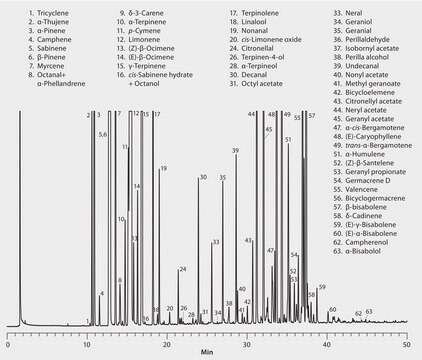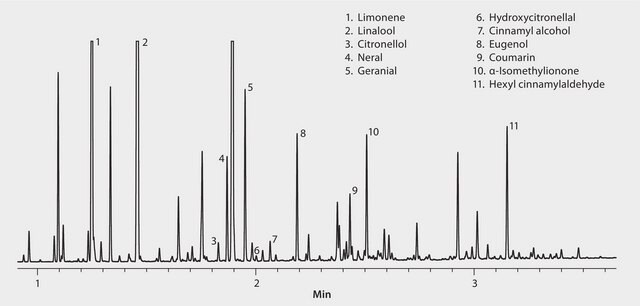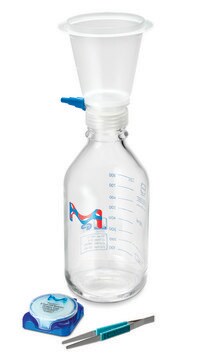28482-U
Colonna GC capillare SLB®-5ms
L × I.D. 30 m × 0.32 mm, df 0.25 μm
About This Item
Prodotti consigliati
Materiali
fused silica
Livello qualitativo
agenzia
Standard Method 6040D
EN 2005/108/EC
EPA 610,625,8015,8082,8100,8141,8270,OLM04.2 SVOA
EPA TO-13,IP-8,8270,525.2,608.1/608.2,608/8081/OLM04.2 PEST
JMHLW
NIOSH 2530,5503
OSHA 62
meets requirements for USP G27 and G36
suitable for EPA 1613
Conformità normativa
FDA LIB 4423
Parametri
-60-340 °C temperature (isothermal)
-60-360 °C temperature (programmed)
Beta
320
df
0.25 μm
tecniche
GC/MS: suitable
gas chromatography (GC): suitable
Lungh. × D.I.
30 m × 0.32 mm
Gruppo funzionale matrice
Bonded and highly crosslinked; silphenylene polymer virtually equivalent in polarity to poly(5% diphenyl/95% dimethyl siloxane) phase
applicazioni
agriculture
chemicals and industrial polymers
cleaning products
clinical
cosmetics
environmental
flavors and fragrances
food and beverages
forensics and toxicology
industrial hygiene
life science and biopharma
personal care
petroleum
pharmaceutical (small molecule)
Tipo di colonna
capillary non-polar
Cerchi prodotti simili? Visita Guida al confronto tra prodotti
Descrizione generale
CodiceUSP: Questa colonna soddisfa i requisiti USP G27 e G36.
Fase:
- legata e altamente reticolata
- Polimero di silfenilene praticamente equivalente per polarità al poli(5% difenil/95% dimetil silossano)
- ≤D. I. 0,32 mm: da -60 °C a 340 °C (isotermica) o 360 °C (programmata)
- ≥D. I. 0,53 mm: da -60 °C a 330 °C (isotermica) o 340 °C (programmata)
Altre note
Note legali
Scegli una delle versioni più recenti:
Possiedi già questo prodotto?
I documenti relativi ai prodotti acquistati recentemente sono disponibili nell’Archivio dei documenti.
Articoli
Sigma-Aldrich presents an article about the analysis of melamine and related compounds in dog food with the use of more economical gas chromatography-mass spectrometry (GC-MS) instrumentation.
Il team dei nostri ricercatori vanta grande esperienza in tutte le aree della ricerca quali Life Science, scienza dei materiali, sintesi chimica, cromatografia, discipline analitiche, ecc..
Contatta l'Assistenza Tecnica.




